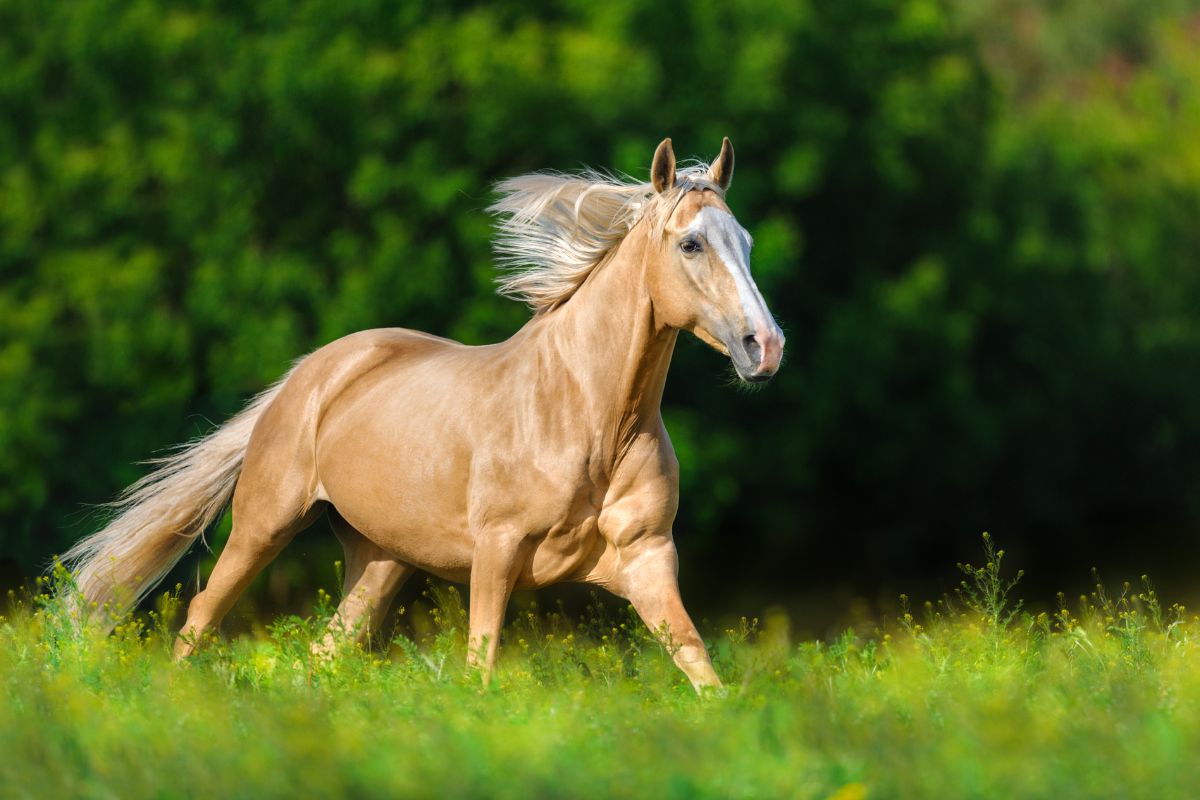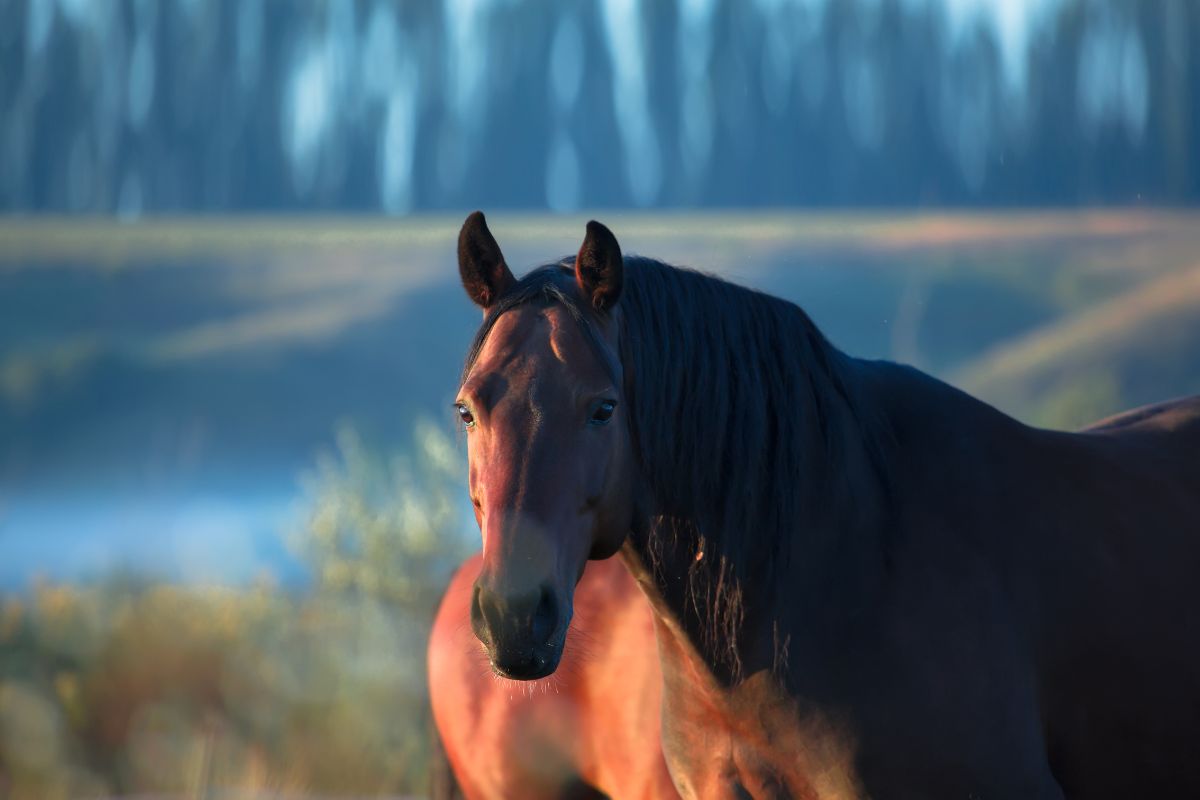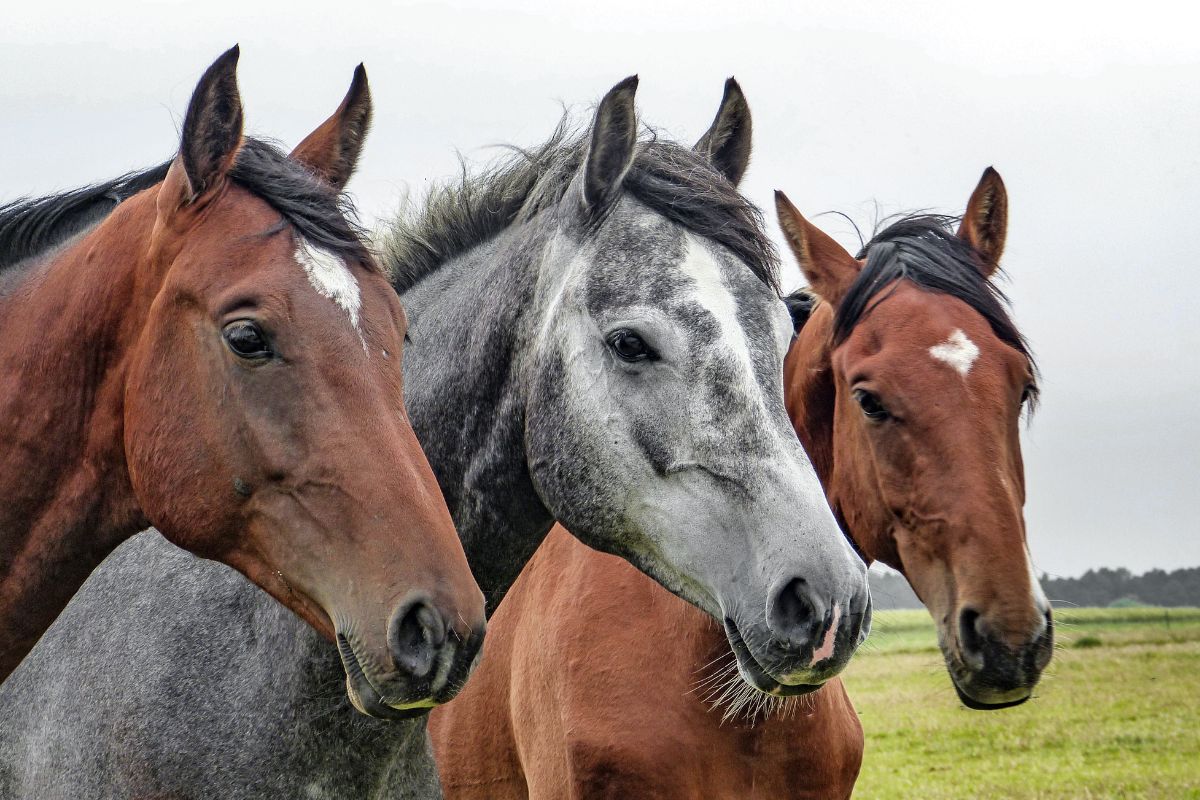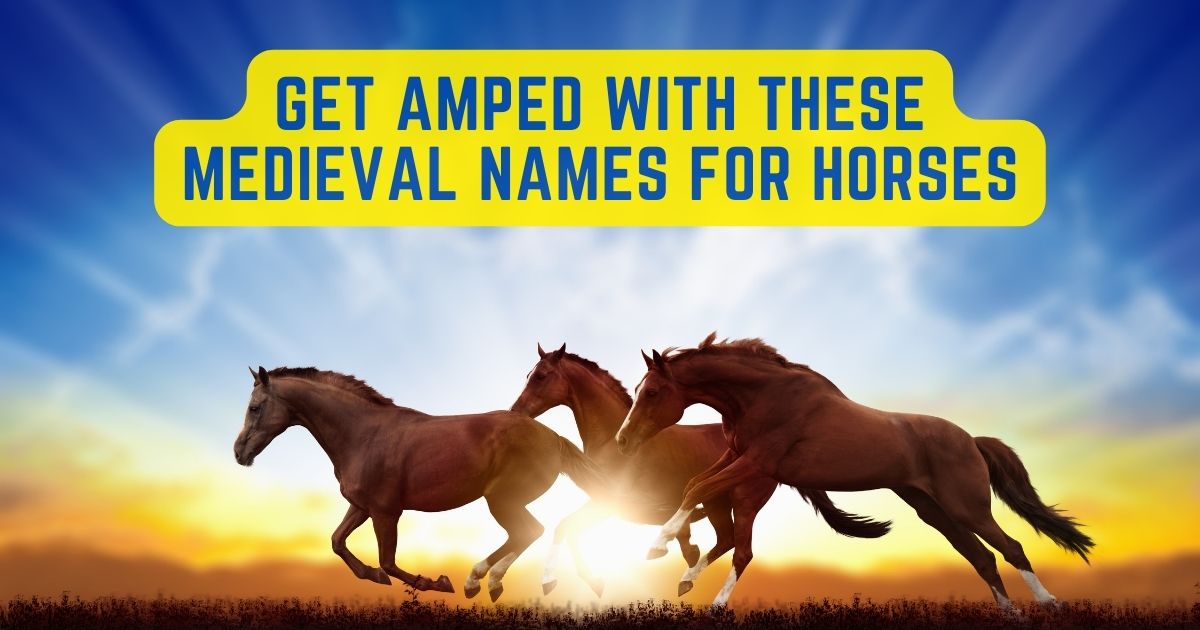What’s a Good Horse Name?
In the Middle Ages, every magnificent horse had a name. Medieval names for horses were neither extravagant nor dazzling nor abstract. The horses would typically get names after distinguishable traits like colors, features, origins, or attributes.
The breed and use of the horse would also influence the choice of names. For instance, they gave horses belonging to nobles or monarchs names based on their color plus the surname or title of an aristocratic family.

Medieval Times and Horses
Medieval Times is more than simply kid-friendly entertainment; the company also seeks to protect the Andalusian horse’s bloodlines and the first knightly customs.
Starting in Benidorm, Spain, Medieval Times supper and tournament later migrated to North America, which now has nine sites. You can even eat with your hands at dinner, which is the true tradition of the Middle Ages.
While you eat, a contest between six knights to become the King’s Champion occurs. The audience can join in the action by supporting their preferable knights. And just like their human counterparts, the magnificent horses are the stars.
The Horses of the Middle Ages
The Andalusian horse is a key element of the program; in fact, Medieval Times is in the lead in maintaining this breed in North America. The Andalusian, which is accurate to the period shown in Medieval Times, was a horse of royalty.
These horses’ intellect, responsiveness, and agility, in addition to their beauty and presence, make them excellent performance animals.
There are about 22 horses in the performance. The Friesian, Thoroughbred, and Quarterhorse are some of the breeds.
A List of Medieval Names for Horses
Medieval Horse Names for Mares
Mares were undesirable as horses for hunting and combat. This isn’t due to their lack of superior abilities like strength or speed. The main reason is that mare horses were mostly for breeding purposes, while part of it was because knights riding a mare were unmasculine.
People knew that to have decent progeny, bright mares and great stallions were necessary. Mares, therefore, concentrated their attention on this area. Here is a list of some of the medieval names for mares:
- Baillet – Dancer
- Binky
- Calimorfis – beauty
- Epona
- Elpis – hope
- Facebelle – beautiful head
- Fauvel – Tawney
- Gramimund – grass mouth
- Kasztanka – Chestnut
- Lebryt – Dappled Gray
- Vairon – Blanket spotted
- White Star (an awesome choice for a white horse)
Medieval Equine Names for Geldings
Although they were occasionally useful for combat, geldings were typically for transportation or agriculture.
In the middle ages, horses played a huge role in people’s daily life. A good horse had equal value as land since they were so expensive. They might even settle tax debt.
Upper-class people might ride horses for longer journeys and walk for shorter ones. They were greatly reliant on farm labor as well. Some of them include:
- Abbot
- Bayard – Bay
- Broiefort – Stamp Hard
- Carbonel – Coal Black (a perfect name for any black horse)
- Copenhagen
- Cincinnati
- Ferrant – Iron Gray
- Grisone
- Red Hare
- Saltperduct – Leaper
- Traveler
Medieval Horse Names for Stallions
Although they weren’t the most dependable, stallions were the most sought-after horses for battle. The most erratic and spirited of the three are stallions. Many battle fatalities by the riders’ inability to keep the horses under control when the horses became agitated.
The Destrier, Palfrey, Courser, and Pouncey were the four different types of Medieval war horses. The most valuable was the Destrier, often only possessed by knights.
The best horse for noblewomen to ride, the Palfrey was a little bit smaller than the Destrier.
The Rounceys were for squires, while the Coursers were swift and frequently used by messengers.
- Blueskin
- Broieguerre – War Stamp
- Marchegai – Proud Walker
- Non-Piu – No more
- Passavant – Leading File
- Plantamor – Death Dealer
- Rocinante
- Traveler
- Veillantif – Wide Awake
More Medieval Equine Names
Several tales of illustrious medieval times horses who battled or served in the medieval era.
- Babieca
- Comanche
- Chetak
- Grani
- Hengeron
- Llamrei
- Marengo
- Palomo
- Sergeant Reckless
- Sleipnir
- Tencendur – ‘Tough Tendons,’ the horse of Charlemange
Funny Medieval Horse Names
Owners would occasionally give Horses pretty odd names. Although the horse’s appearance largely influenced these names, they are not endearing.
- Maigremor – Meaning’ Rack of Bones’, owned by Soudan from the Jerusalem literary source
- Cornuet – Meaning’ Mane Like Horns’, owned by Grifon from the Gaufrey literary source
- Queue de Agache – Meaning’ Magpie Tail‘, from the City of Demay

The Categories of Medieval War Horses
Mongolian Horse
One of the few historic horse breeds that remains largely unaltered now is this one. As its name suggests, this horse breed was popular among the Mongols for thousands of years, particularly during the Middle ages.
They are incredibly robust and have high stamina, making them ideal for warfare. They are stoat-like, so they move more slowly than other horse breeds. The Mongols frequently had extra horses into combat to change horses as needed.
With more than 3 million horses spread out around the globe, this Horse nevertheless has one of the greatest populations today. They are among the horses with the largest genetic variety. This Horse is still the main mode of transportation in several of the surrounding nations. In some countries, they are also milk horses.
Andalusian
One of the most graceful battle horses ever is this one. Many countries were part of it during the Middle Ages and are popular as the “royal horses of Europe.” They are highly known for their elegant trot and strong frame.
The Spanish war horse started to win the hearts and minds of European monarchs and queens during the Late Middle Ages. Whether this was a single breed or a collection of species that arrived from Spain is unknown.
The 15th century saw the official recognition of this breed. The breed’s forefathers, however, existed far earlier. This breed is well-recognized for being fairly docile; therefore, they probably contributed to the development of many contemporary horse breeds by making them friendlier to humans.
This horse breed is still in use today as an adaptable riding horse. Due to their attractiveness, they also frequently appear in historical and fantasy movies.
Shire
Most likely, horses like this didn’t exist in the Middle Ages. But their forebears did. The larger battle horses in England are probably the Shire horse’s ancestors. The “English Great Horse,” which served as a medieval horse during the Middle Ages, was most likely this horse’s ancestor.
While the development of gunpowder generally brought an end to the heavy horse breed, this horse nonetheless had popularity because of its adaptability. It established itself as a crucial workhorse in several sectors, including agriculture, forestry, and transportation.
This horse breed was first present in the middle of the 18th century, despite having likely existed from ancient times. Unfortunately, they were functional during World War II, significantly reducing their population. Although they are still regarded as endangered horses today, fortunately, they were adaptable enough to make a comeback.
Arabian
You probably wouldn’t picture these gentle horses in battle. However, they were perhaps employed frequently. These horses participated in more conflict in various eras than any other breed.
From Ancient Egypt through Greece to the Ottoman Empire, the Arabian breed’s forebears lived, and many of these countries probably utilized them as war horses. They are elegant horses that are always valuable for their endurance and speed. They were ideal for cavalry attacks and raids.
The importance of the Arabian Horse increased as the usage of heavier warhorses gradually declined. They were mostly useful for speed and agility during the Late Middle Ages.
Although the modern Arabian breed is probably different from its prehistoric ancestors, at least marginally, it remains one of the most well-known breeds. Because of their tremendous intelligence and stamina, they are adaptable.
Marwari
Another light cavalry horse, but one that saw much of its service in the Early Middle Ages. They were popular for their courage and graceful movements, which were advantageous in combat. Although the breed’s initial origins are unknown, Arabian, Turkoman, and Mongolian elements are most likely present.
Although it was relatively common, this breed previously numbered in the tens of thousands. They were well-known outside their home countries as a result of their talent. The 16th century saw a lot of popularity for them.
The Marwari is currently India’s national equine. It shares a close relationship with several other breeds, such as the Kathiawari, which was also a warhorse.
A warhorse like this hasn’t always been simple to own. Only the nobility and the aristocracy could afford to own one of these horses in the past. These days, they are primarily useful in polo and dressage contests.
Cross this breed with a Thoroughbred to produce bigger, more athletic horses. They frequently participate in performances and religious rituals, where they were once tacks.
Percheron
This French breed is for combat. Numerous depictions of this breed’s forebears serve as heavy cavalry for armored knights.
This breed was presumably the result of indigenous horses mating with Spanish stock in the river regions of Northwestern France. The High and Late Middle Ages were Percheron’s heyday as a warhorse. It is a superb fit for heavy cavalry because of its size, strong inherent strength, and size.
As the need for armored knights decreased, this horse became popular for agriculture, forestry, and coach pulling. They also started to grow a little taller when their goal changed. They gained more pulling power and mellowed out considerably.
Beginning in the late 19th century, the Percheron became one of the most widely used draft horses in the United States. Today, these horses are typically gray or black. They are primarily useful during drafts.
Barb
The Barb is a North African breed famous for its tenacity and toughness. This Horse most likely originates from Africa, where it was an important aspect of the local culture. This horse breed was probably well-known in the area for a very long time because of its ancient cave paintings. Since ancient times, it has been useful during war, hunting, and labor.
This horse can occasionally be mistaken for an Arabian when imported. However, they are very different when you know what you’re searching for. They were probably frequently mistaken for the Arabian in the past because of their comparable size, and their handlers were often Muslims, just like the Arabian.
These horses are common in Morocco, Algeria, Spain, and France. Their numbers steadily decline in North Africa due to the region’s difficult economic conditions.
Akhal Teke
This breed probably descended from the first domesticated horses. Through careful breeding, the outcome was a strong, adaptable horse serving various functions. They are one of the world’s oldest horse breeds.
The ancient Turkoman Horse was a breed that sprang from the eastern slopes of central Asia between 3000 and 4000 BCE, and they are the only variety still in existence.
Most people are familiar with these horses for their speed and stamina, which made them excellent warhorses. They are also known as “Golden Horses” because of their striking metallic coat. They were originally from a harsh desert region but adapted to it.
Only 6,600 horses exist in the world today, making horses rather uncommon. They are also expensive as a result.
Although it is challenging to pinpoint this breed’s specific origins, it probably originates from animals that lived more than 3,000 years ago. Horse classification was according to their type or location back then; there were no such things as horse breeds.
The extinct Turkoman horse links to this type. Though modern researchers do not have the details yet, the ancient Turkoman horse may link to the Akhal Teke in Iran.
Although it may have been an ancestor rather than a descendant, the Arabian horse may have also evolved from the breed.
Most of this breed today are crossbreeds because many Arabian mares were useful in developing it between the 14th and 19th centuries.
Famous Medieval Horses
Bucephalus
Untamable horse Bucephalus was famous for being more graceful and swift than Pegasus. But because it enjoyed eating people, it went to prison to eat criminals.
Alexander the Great once heard Bucephalus, also known as “Bull Head,” neighing and immediately recognized himself in the horse. The horse, born the same day as him, submitted to him by bowing before him, and the two continued their journey together.
Until Bucephalus died in the Battle of Hydaspes, they traveled through numerous uncharted regions of the world and engaged in multiple battles together. Without regard for the conflict, Alexander dragged Bucephaslus’ body out of the melee to avoid mistreatment.
Baucent
Baucent was a devoted horse that gallantly participated in numerous battles. It belonged to the fictional character Guillaume d’Orange, modeled after the Duke of Aquitaine.
Since Guillaume d’Orange had a deep love for horses, he made it a point to avoid hurting them during battle before stealing them for himself. He was famous for saving 15 horses from a band of robbers and restoring a wounded one to health through prayer to God.
He treasured and remained most loyal to Baucent. Despite his weariness, the horse never slowed down during a battle. In exchange for an allowance to only drink from the golden cup, Guillaume promised to groom the horse four times per day during the Battle of Aliscans.
Guillaume frees Baucent during the conflict so that he can seize his foe’s mount. Sadly, his devoted horse follows him and dies in the process. Guillaume beheaded Baucent to protect his body because he did not want the pagans to touch his horse.
Our Top Medieval Horse Naming Tips
Decide what kind of feeling or horse trait you want your horse’s name to convey before choosing the perfect medieval names for horses.
Finding Meaning
When we imagine the Middle Ages, we frequently focus on the power and allure of the magnificent horses that would take their riders into battle. There were also other horse breeds. Horses are useful for carriage, long-distance travel (typically gaited or smoother), ladies’ horses, draft horses, and more.
Choosing a Language
King Arthur and his Knights of the Round Table come to mind when most people think of the Middle Ages. This well-known Camelot defender hails from Britain, but there are others.

How to Pick a Medieval Equine Name
Developing the ideal war horse names for your horse can be challenging. If you’re having trouble, consider using qualities or personality traits as inspiration, as medieval names did.
There are many choices today, and horses frequently receive names that are appropriate for humans as well. Here are some suggestions without getting too esoteric if you’re seeking something a little distinctive or historically significant;
Color-based naming Try “Azul,” which is Spanish for “blue,” or “Topaz,” which is for the blue stone for fire energy. Or you may decide on a name in honor of a well-known historian, like “Lancelot,” named for Sir Lancelot, or “Cid,” named for Rodrigo Diaz de Vivar.
The Final Say
While many Medieval horse names may have an odd or quirky sound, they are unquestionably unique and have intriguing meanings.
The inhabitants of the Middle Ages loved and cared for their horses, and they frequently gave them affectionate names. Whether you use the same names or modify them, this practice can cross over into the contemporary era.
